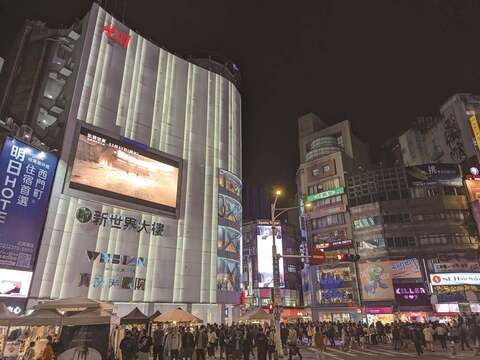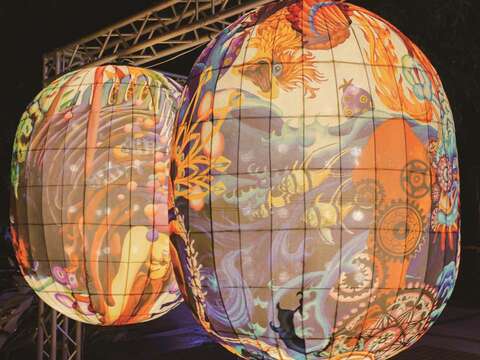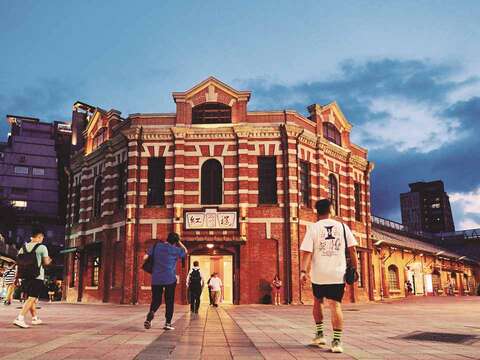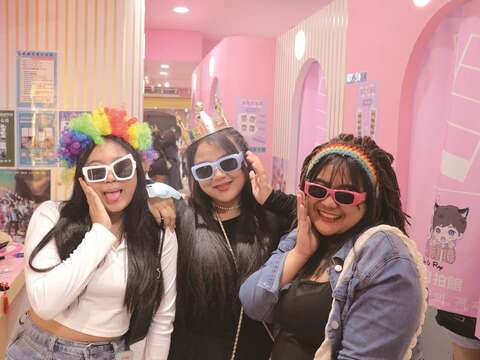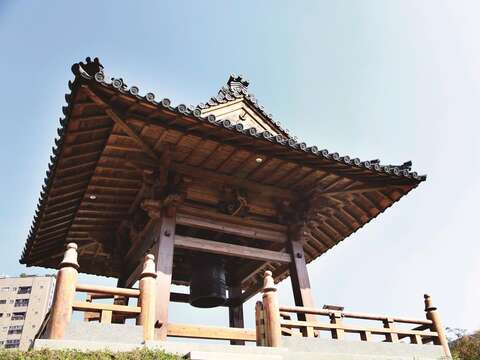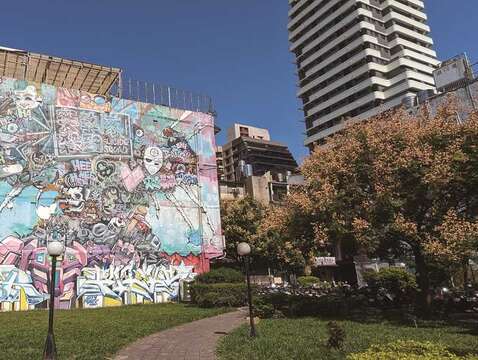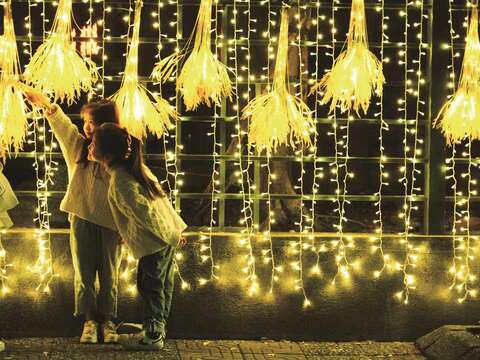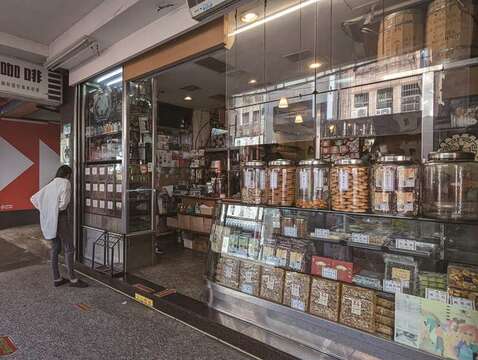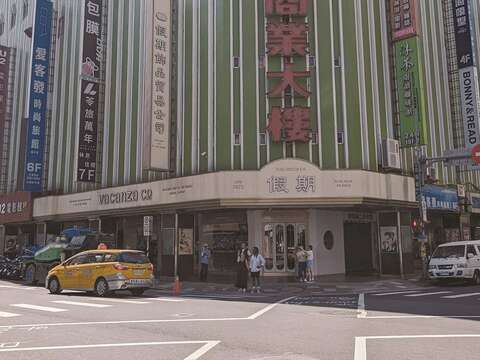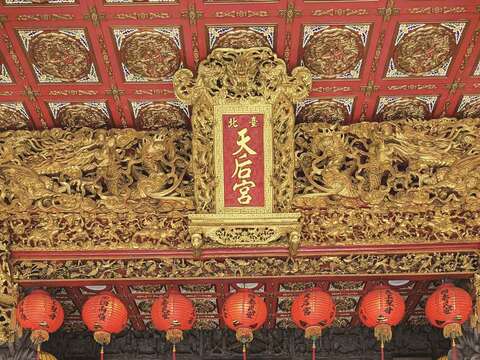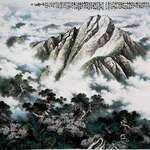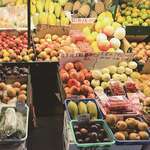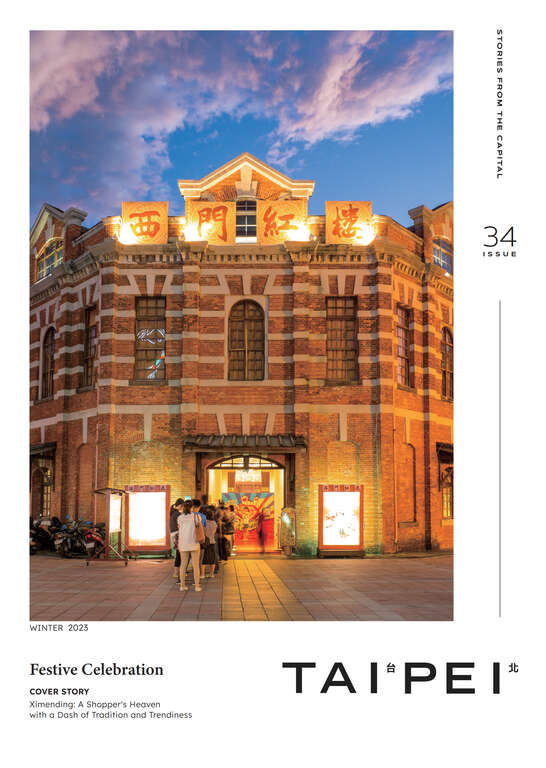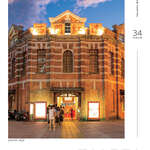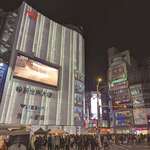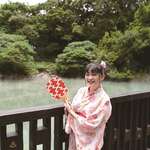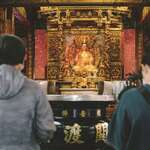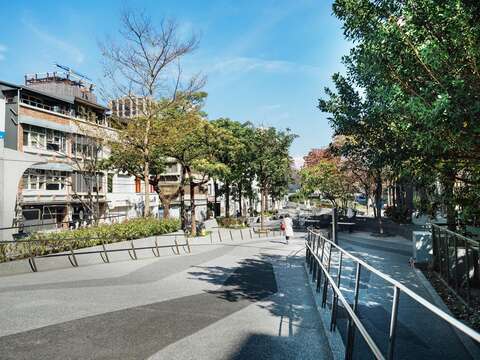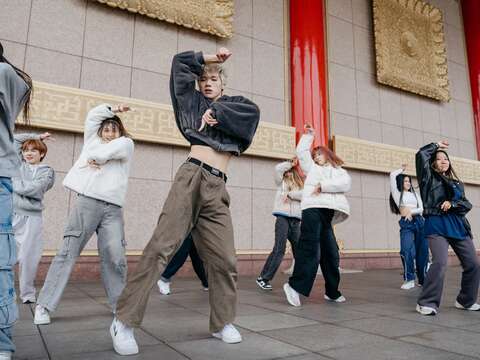Post date:2023-12-11
2582
TAIPEI #34 (2023 Winter)
Ximending: A Shopper's Heaven with a Dash of Tradition and Trendiness
Author Yi Tseng, Faith Zhang, Josephine Shuili Lin, Kerstin Hsu, Louis Zhang
Photographer Wayne Huang, Chelsea Chen, Department of Information and Tourism, Taipei City Government
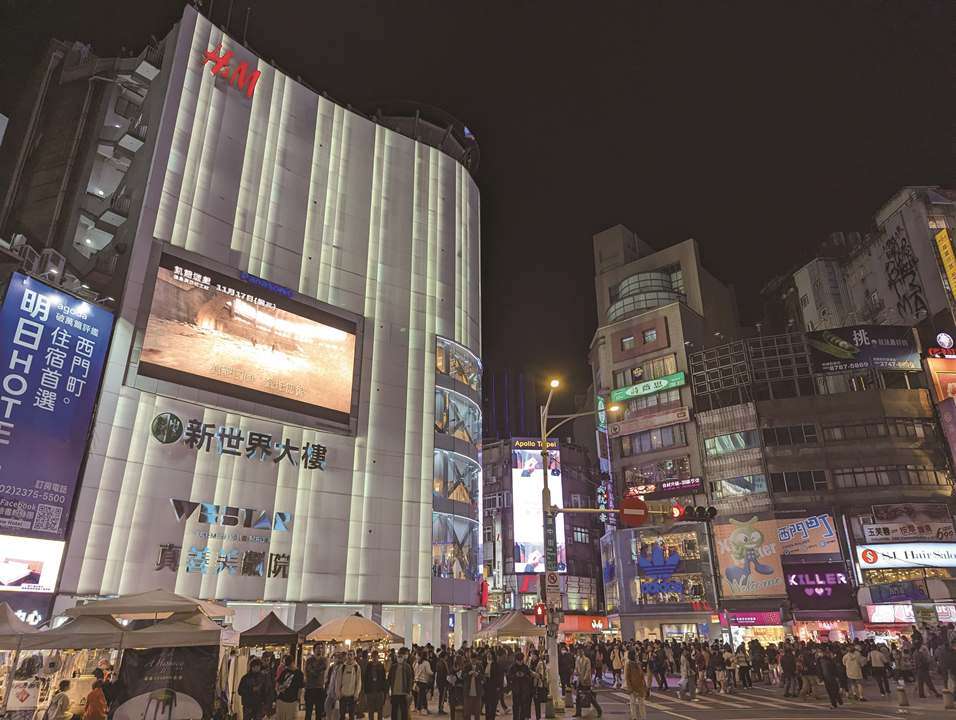 ▲Ximending is a bustling and vibrant shopping district in Taipei, famed internationally for its cool charm. (Photo・Wayne Huang)
▲Ximending is a bustling and vibrant shopping district in Taipei, famed internationally for its cool charm. (Photo・Wayne Huang)
Ximending (西門町) is best known as a bustling, colorful shopping district near Taipei Main Station. Tourists arriving on the Airport MRT can easily transfer one stop to Ximending from Main Station's central hub to immerse themselves in the area's unique mix of the trendy and the traditional.
The area has been variously nicknamed as the Shibuya, Harajuku, and Times Square of Taipei — a place where diverse styles freely mingle. It features hip stores selling current fashions and athletic wear, shops featuring Japanese and Korean pop culture, department stores, tattoo parlors, a night market, street performers, and Cinema Street, not to mention a wide variety of tea shops, especially tapioca milk tea favored by Taiwanese youth, as well as hotpot, barbecue, conveyor belt sushi restaurants, and places to buy all sorts of gifts. In November 2022, Time Out named Ximending one of the 51 coolest neighborhoods in the world for its wealth of attractions — just one small indicator of its charm.
Ximending received its name during the Japanese era for its location just outside Ximen, literally "West Gate." It consists of the area bordered by Zhonghua Road (中華路), Kangding Road (康定路), Chengdu Road (成都路), and Hankou Street (漢口街). Early on, Ximending was dominated by movie theaters. Beginning in the 1930s, it was the largest center for shopping and entertainment in Taiwan, a status it maintained until being displaced by the rise of Taipei's East District in the 1980s.
The completion of the Bannan Line and the creation of a pedestrian district in the 1990s brought crowds back to enjoy performances, concerts, autograph sessions, and more. For instance, the annual Cosplay Battle Ximending (Cosplay決戰西門町) is an iconic event for anime fans that always calls countless enthusiastic cosplayers to join the fun. Now in its tenth year, the event has a reach that extends far beyond the local fans who participate, drawing attention from fans all over Asia.
The Forefront of Trends
There's always something going on in modern, avant-garde Ximending, making it both a popular gathering place for the younger generation and a must-visit destination for tourists.
Fashion moves swiftly in Ximending, which is home to many international brands, including Don Don Donki from Japan, as well as Champion from America. Don Don Donki Ximen, the chain's first location in Taiwan, was established in 2021 and is open 24 hours a day. Their broad product range makes for a wonderful shopping experience.
But that's not all. Further expressions of the area's popular culture include:
Graffiti
Lane 96 of Kunming Street (昆明街96巷), known as American Street, is home to a cluster of stores selling American fashion brands and vintage clothing. It also features eye-catching graffiti based on basketball, anime, and movies, vividly splashed across the walls, such as the movie Suicide Squad. As a result, American Street has become a popular spot for photos, and even served as the filming location of many hip-hop singers' music videos, while also being a key showcase of Taipei's street culture. Lane 120 of Section 2, Wuchang Street (武昌街二段120巷), as well as Lane 103 of Emei Street (峨嵋街103巷), are also well worth visiting for their graffiti.
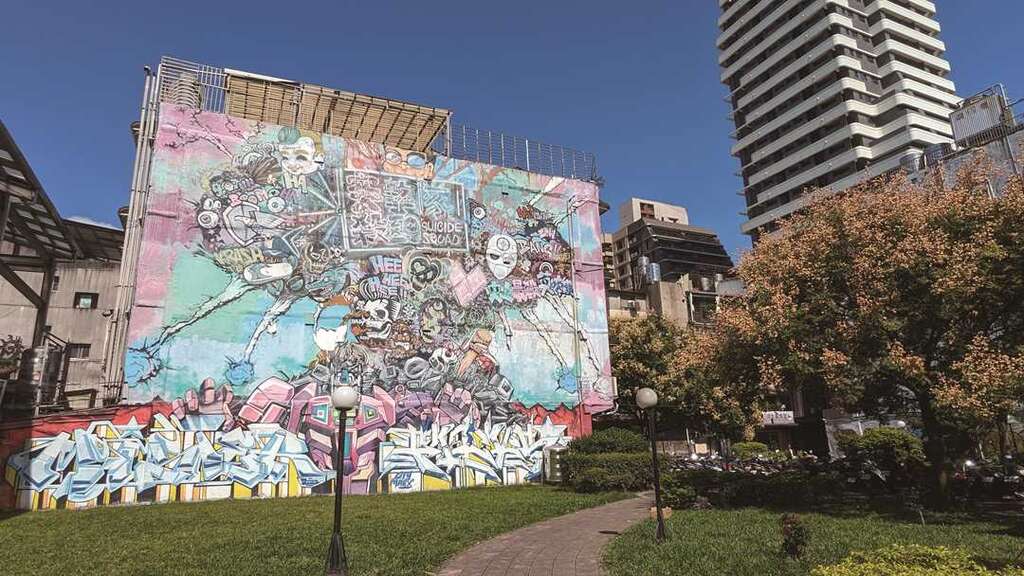 ▲Stroll along American Street to admire the street art and the cutting-edge culture it conveys. (Photo・Wayne Huang)
▲Stroll along American Street to admire the street art and the cutting-edge culture it conveys. (Photo・Wayne Huang)
Tattoos
Lane 50 of Hanzhong Street (漢中街50巷), the only covered street in Ximending, is home to parlors offering both ink and piercings. Most recently, they've expanded their offerings to include all sorts of creative wraps for helmets and scooters — a great way to express your individual personality.
Movies
Ximending's Cinema Street had its beginnings in the Taiwan Exposition held by the Japanese back in 1935, for which four magnificent theaters were built. Construction on the Chung Hua Market Bazaar, which is no longer around, was completed in 1961, connecting Ximending with the rest of the city. As the economy boomed, numerous theaters sprang up along Wuchang Street (武昌街). While those old theaters have since closed down, newcomers like LUX CINEMA, in89 CINEMAX, and SHIN KONG CINEMAS are here to keep the cinematic atmosphere alive.
Fashion Trends
In the 1990s, young people came to the Wan Nian Building (萬年商業大樓) on Xining South Road (西寧南路) in search of magazines imported from Japan and posters of stars from Europe, the U.S., Japan, and Hong Kong, making it the site of fond memories of youth for many Taipei residents. Though its halcyon days are past, it remains a good place to buy sneakers, watches, games, and toys.
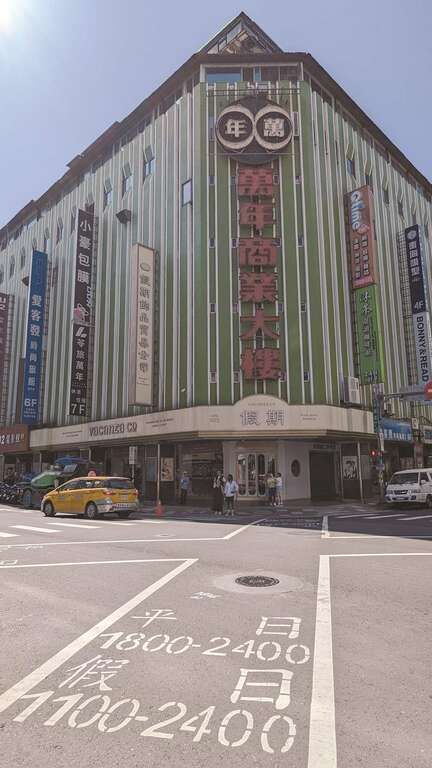 ▲Wan Nian Building features a variety of trendy products, and its exterior is also a popular backdrop for Instagram influencers. (Photo・Wayne Huang)
▲Wan Nian Building features a variety of trendy products, and its exterior is also a popular backdrop for Instagram influencers. (Photo・Wayne Huang)
The building has also become a major hotspot for sneaker enthusiasts. Not only is it home to many select shops, it's also an excellent place to spot limited edition sneakers; some even say this is where the largest number of different styles of Converse can be sighted.
Meanwhile, skateboarders, cosplayers, anime fans, street dancers, and more can all find a place to belong here in Ximending.
A Harmony of Heritage and Modernity
Ximending has been Taipei's most prosperous shopping district ever since the Japanese era. Beneath its trendy exterior lies a glimpse of Taipei's long history, granting it a unique, multi-layered charm that blends old and new.
The Red House
Constructed in 1908, the Red House (西門紅樓) is a Ximending landmark. It is Taiwan's first government-constructed public market and one of the most well-preserved municipal monuments.
In its heyday, performances at the Red House were patronized by the surge of immigrants that followed the Kuomintang's arrival in Taiwan after their loss in the Chinese Civil War. Hence, Peking opera, Chinese crosstalk performances and dramas provided comfort and consolation for their sense of homesickness. From 1963 on, black-and-white wuxia movies, second-run Western movies, and domestic period films were all featured at the Red House Movie Theater.
In 2000, the Cruciform Building and the adjacent North and South Squares were destroyed in a fire. Their destruction and rebirth marked the beginning of a new chapter in the Red House's history. Today's Red House has become a center for culture and creativity as well as a performance and exhibition space, incorporating a wide array of offerings.
The second floor of the Octagon Building features a theater and central display space, while the Cruciform Building houses the Creative Boutique and the Riverside Live House (河岸留言), a venue for live music. Meanwhile, the North Square has a market for artists, and the South Square is home to a number of open-air cafés and a world-renowned collection of gay bars, making the Red House a notable symbol of Taipei's LGBT+ friendliness.
The surrounding area is also bustling with life and a popular hangout, including a market for arts and crafts, live music, and plenty of outdoor dining and bars. Leave MRT Ximen Station through Exit 6 and look left to see the Red House.
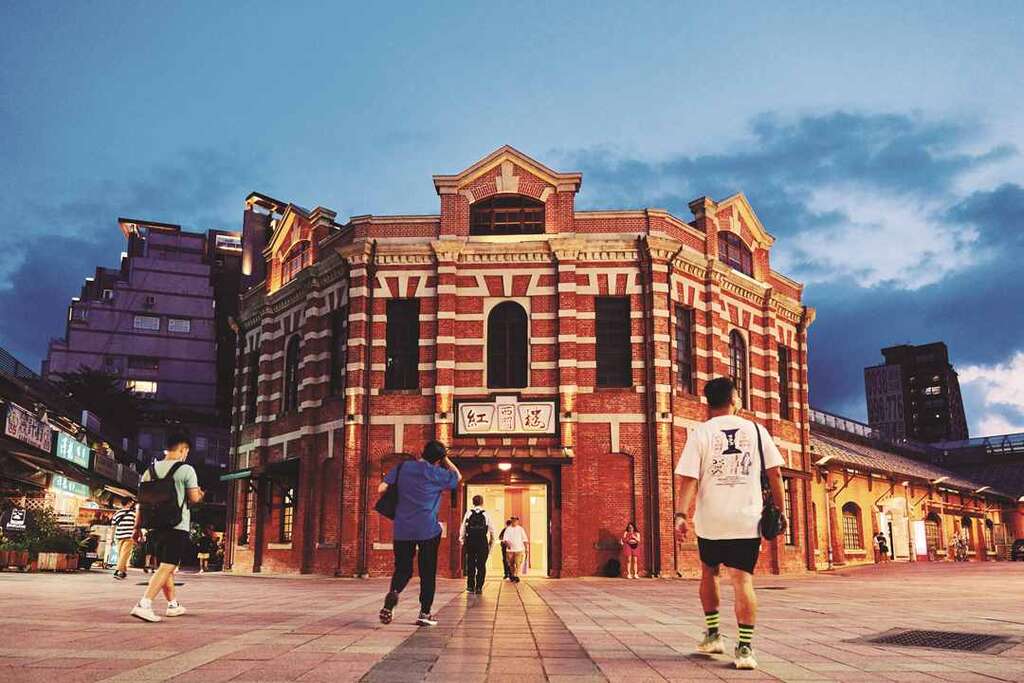 ▲Besides being a popular attraction in Ximending, the Red House is also a gathering place for the LGBT+ community. (Photo・Department of Information and Tourism, Taipei City Government)
▲Besides being a popular attraction in Ximending, the Red House is also a gathering place for the LGBT+ community. (Photo・Department of Information and Tourism, Taipei City Government)
Taipei Tianhou Temple
Ximending's Taipei Tianhou Temple (台北天后宮) was built in 1746. The primary deity worshiped there is Mazu. Standing on Chengdu Road, though its size and bustle are invisible from the street, step inside and it becomes clear that the temple has no shortage of devotees.
The temple had its beginnings with immigrants who crossed the sea to come to Taiwan. Faced with a future full of uncertainty, they carried incense and statues of deities with them for safety. After arriving in Taiwan, they built this temple in gratitude for the goddess' protection, and the number of worshippers steadily increased. This temple has variously been torn down, moved, destroyed by fire, and eventually rebuilt. The priceless wooden statue of Mazu inside the temple has a history spanning two hundred years.
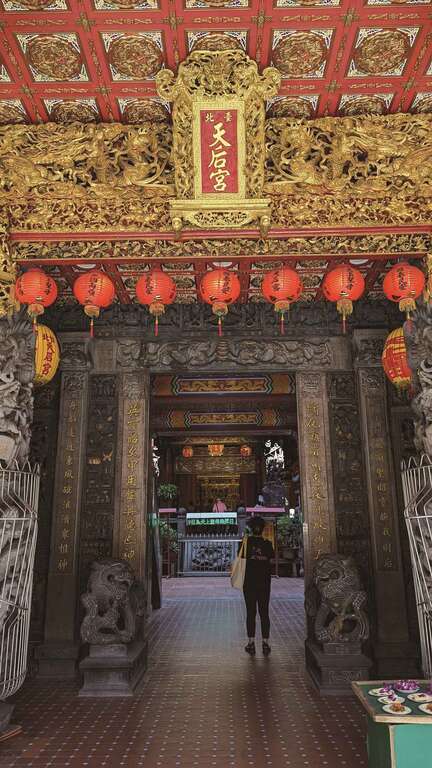 ▲Taipei Tianhou Temple is situated on the bustling Chengdu Road, not far from The Red House. (Photo・Wayne Huang)
▲Taipei Tianhou Temple is situated on the bustling Chengdu Road, not far from The Red House. (Photo・Wayne Huang)
Nishi Honganji
Nishi Honganji (西本願寺) on Zhonghua Road was once known as the Taiwanese Branch of Jodo Shinshu Honganji School. Constructed during Japanese era, it was the largest Japanese Buddhist temple in Taiwan in that period.
From a fire in 1975, the temple burned to the ground. Later, the Taipei City Government restored the sando (path approaching the temple), rinbansyo (abbot's residence), shoro (bell tower), and Shuxin Hall (venue used for Buddhism teachings), giving them a fresh new face that nonetheless retains their historical style.
Walk into Nishi Honganji Square and you'll immediately see the bell tower, which stands on a small hill. Across from it is the abbot's residence, an authentic Japanese building that once housed temple staff on duty. Since being restored to its original appearance, it has hosted cultural and historical exhibitions, and has also become home to Eighty-Eightea (八拾捌茶輪番所), a quaint teahouse that offers guests a taste of the Japanese history in Taiwan.
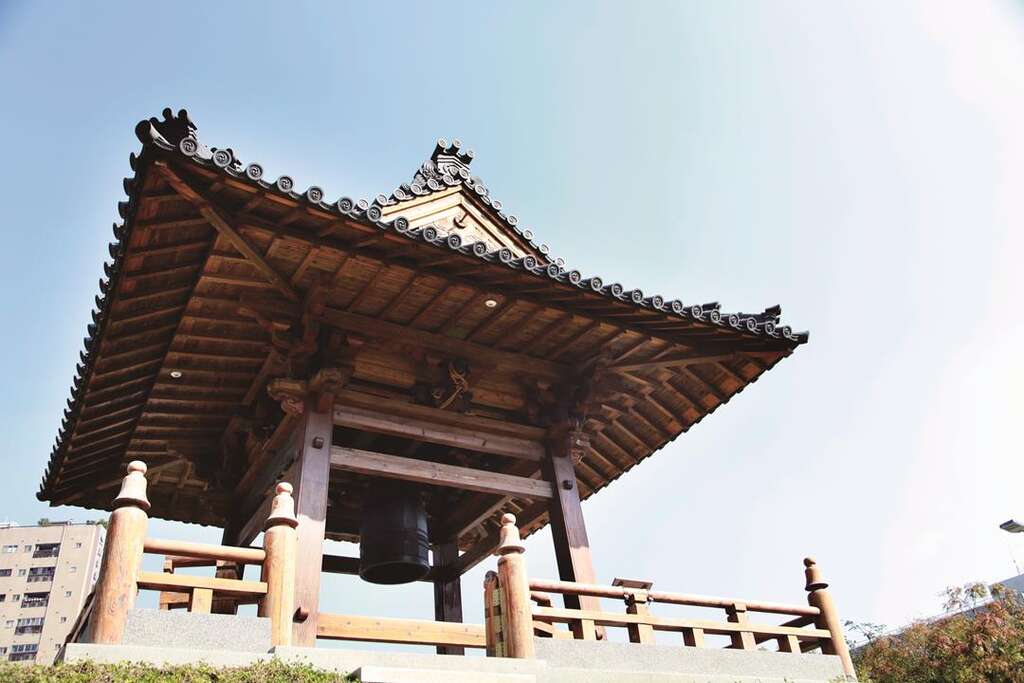 ▲Nishi Honganji Temple is a perfect spot to snap some appealing photos. (Photo・Department of Information and Tourism, Taipei City Government)
▲Nishi Honganji Temple is a perfect spot to snap some appealing photos. (Photo・Department of Information and Tourism, Taipei City Government)
Culinary Archaeology
In the rich tapestry of Ximending's century-long history, a culinary archaeology unfolds, documenting the convergence of cultures and marking the stages of social development.
Apart from historical buildings, the Japanese also brought siphon-style coffee to Taiwan, giving birth to the iconic Fong Da Coffee (蜂大咖啡). Even today, they continue to serve traditional Mandheling coffee paired not with Western-style cheesecakes, but with distinctive local treats like mung bean cakes.
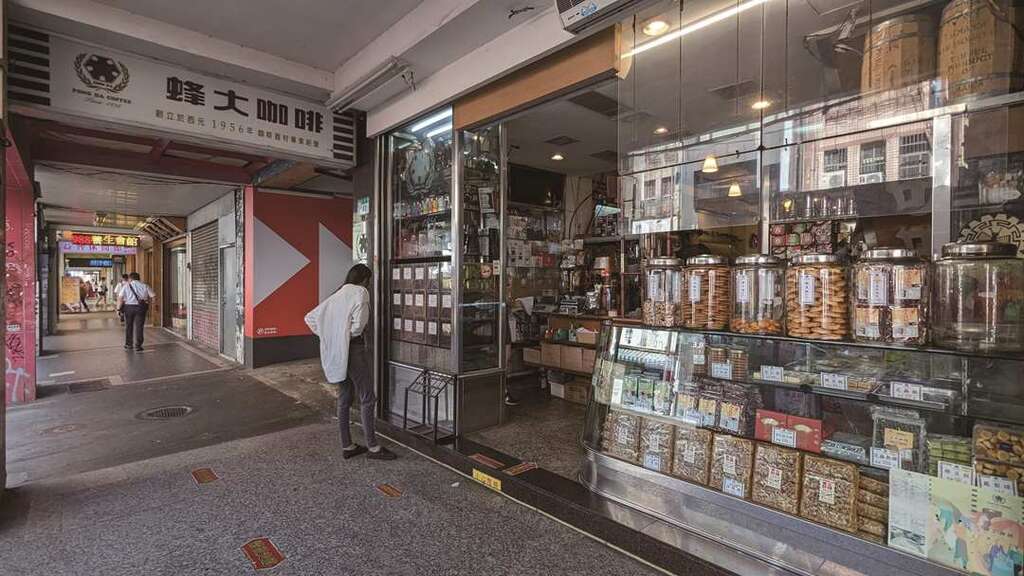 ▲Fong Da Coffee sells traditional snacks to pair with coffee, providing a delicious fusion of multicultural flavors. (Photo・Wayne Huang)
▲Fong Da Coffee sells traditional snacks to pair with coffee, providing a delicious fusion of multicultural flavors. (Photo・Wayne Huang)
Hong Kong, the first of the Four Asian Tigers to experience a post-war economic boom, once influenced Taiwan through the popularity of Hong Kong-style dim sum. Tucked away on the tenth floor of the once-premier Lions' Plaza Commercial Building (獅子林商業大樓), Golden Lion (金獅樓) preserves its ancient and dilapidated decor, capturing the essence of a bygone era where waitresses wheeled carts through the hallways, a sight even rare in present-day Hong Kong.
Founded in 1946, Mei Guan Yuan (美觀園), now in its third generation of management, offers Japanese cuisine with a Taiwanese twist. Far from the delicate art of kaiseki, their culinary approach is robust and flavorsome, providing a taste of Japanese cuisine that's unique to the world.
Seventy years ago, when railway tracks still skirted the edges of Ximending, refugees from mainland China set up street stalls alongside the rails. Many of them brought the rich flavors of mainland Chinese dishes, sustaining themselves and enriching the palates of Taipei locals. Lao Shan Dong Handmade Noodles (老山東牛肉麵), in business for over seventy years, remains a popular post-movie dining choice for many Taipei residents. Its generous portions of beef and hearty broth guarantee a fulfilling meal, offering a down-to-earth good value dining experience.
These longstanding establishments, with their timeless flavors, have loyal customers spanning multiple generations — a testament to the enduring warmth and hospitality of these venerable eateries.
Following the footsteps of Instagrammers
Young people have many ways of enjoying Ximending, not least the popular activity of snapping a few photos for Instagram. For instance, a visit to Nishi Honganji can produce snapshots comparable to taking a trip to Japan, while photos taken in the long corridors of Zhongshan Hall (中山堂) have the atmosphere of old movies.
Cinema Street and American Street are also first-rate backdrops for creative photography. But the most classic image of Ximending is none other than Rainbow Six, the massive rainbow painted on the street outside Exit 6 of MRT Ximen Station. In May 2019, Taiwan became Asia's first country to legalize same-sex marriage. Rainbow Six was created in September of the same year. It symbolizes Taipei's support for the LGBT+ community and gender equality, and since then it has become one of Taipei's most seen Instagram check-ins.
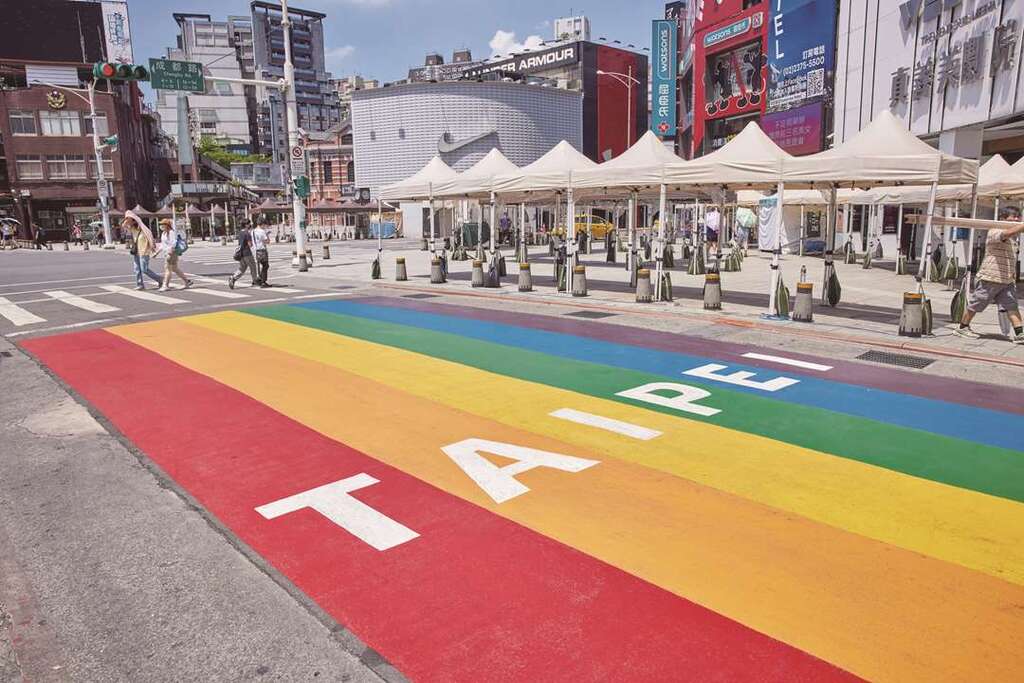 ▲Rainbow Six, prominently displayed outside MRT Ximen Station, symbolized that Ximending is truly a diverse and inclusive place. (Photo・Department of Information and Tourism, Taipei City Government)
▲Rainbow Six, prominently displayed outside MRT Ximen Station, symbolized that Ximending is truly a diverse and inclusive place. (Photo・Department of Information and Tourism, Taipei City Government)
For more unexpected spots, the rooftop of Luoyang Car Park (洛陽停車場) has been a viral attraction for years. Through the lens of a camera, the plain parking garage takes on a distinctive industrial style. The geometric lines of the surrounding buildings and the timeworn signs and railings form a perfect backdrop for photography, offering a hint of the old Hong Kong vibe.
Another favorite photo-related activity in Ximending involves Korean-style photobooths. The area features many types of these machines where young people gather in groups to have fun.
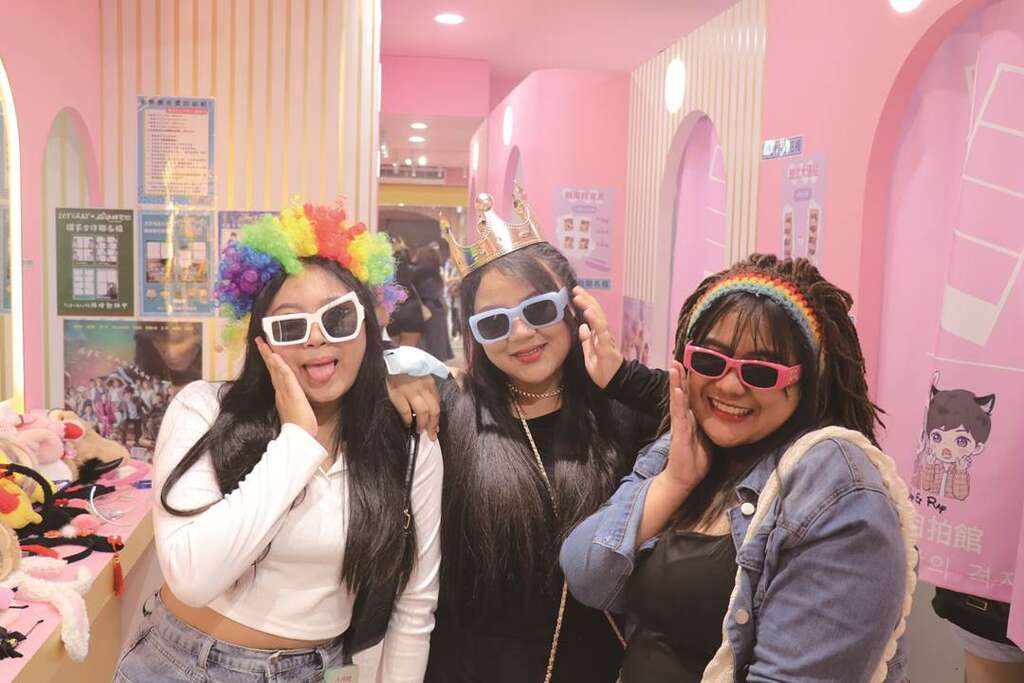 ▲A Korean-style photo sticker shop. Customers have just finished dressing up and are about to take a few snaps. (Photo・Chelsea Chen)
▲A Korean-style photo sticker shop. Customers have just finished dressing up and are about to take a few snaps. (Photo・Chelsea Chen)
Ximen Play and Buy
Ximending is eternally full of life, and never more so than during Christmas and New Year's. From December 1st to 31st, the Taipei City Government will collaborate with local businesses to hold 2023 Ximen Play and Buy (西門PLAY樂購町). Unique displays will be set up all over Ximending for visitors to stop and take photos — a wonderful way to share the holiday spirit on social media.
Pop singers and idols have also been invited to participate in this event, ensuring a festive experience to the full.
Taipei Lantern Festival
The 2024 Taipei Lantern Festival will also be held in Taipei's Ximending area, with the main lantern displays stretching from MRT Beimen Station to MRT Ximen Station. It is divided into three major exhibition areas: Ximending Zone, Beimen Zone, and Zhonghua Road Zone.
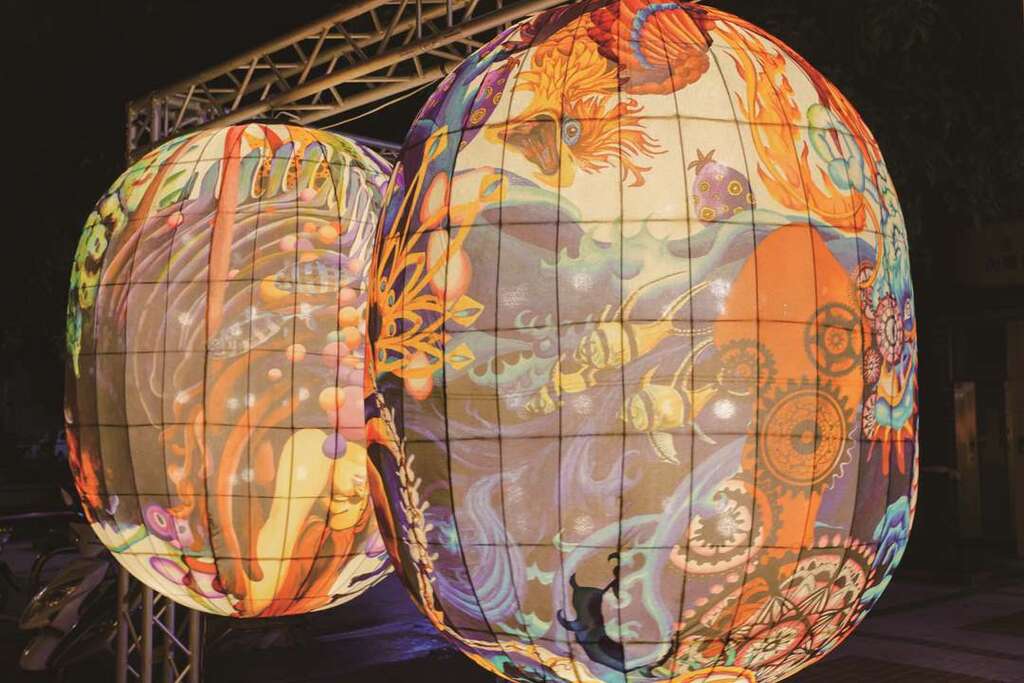 ▲The 2022 Taipei Lantern Festival display, titled Exploring Nature Lantern, created by Dutch artist Karin Janssen. (Photo・Department of Information and Tourism, Taipei City Government)
▲The 2022 Taipei Lantern Festival display, titled Exploring Nature Lantern, created by Dutch artist Karin Janssen. (Photo・Department of Information and Tourism, Taipei City Government)
The festival will illuminate the city starting from February 2nd, with the official exhibition taking place from February 17th to March 3rd. Curated by the internationally acclaimed light artist Liu Zhiliang (劉治良), in collaboration with traditional Taiwanese paper-cutting artists and calligraphers, the festival blends Chinese traditional culture, modern urban culture, and technology-driven light and sound art, offering a unique Lunar New Year experience in Ximending that's rich in sound, color, and culture.
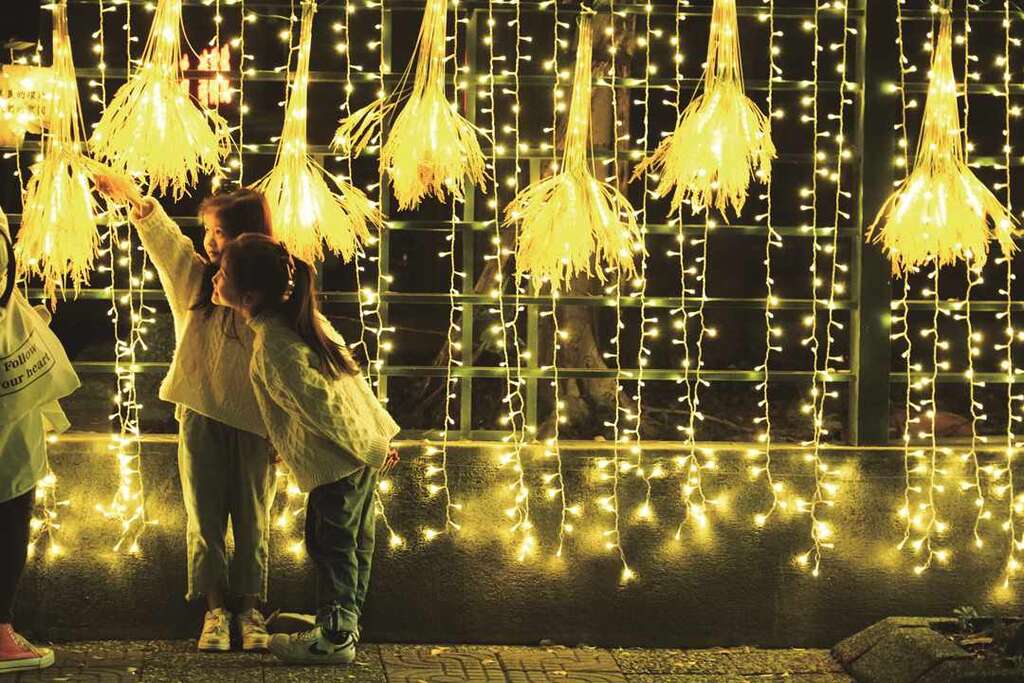 ▲The Taipei Lantern Festival is perfect for families to enjoy. (Photo・Department of Information and Tourism, Taipei City Government)
▲The Taipei Lantern Festival is perfect for families to enjoy. (Photo・Department of Information and Tourism, Taipei City Government)
Ximending: A Shopper's Heaven with a Dash of Tradition and Trendiness
Author Yi Tseng, Faith Zhang, Josephine Shuili Lin, Kerstin Hsu, Louis Zhang
Photographer Wayne Huang, Chelsea Chen, Department of Information and Tourism, Taipei City Government
 ▲Ximending is a bustling and vibrant shopping district in Taipei, famed internationally for its cool charm. (Photo・Wayne Huang)
▲Ximending is a bustling and vibrant shopping district in Taipei, famed internationally for its cool charm. (Photo・Wayne Huang)Ximending (西門町) is best known as a bustling, colorful shopping district near Taipei Main Station. Tourists arriving on the Airport MRT can easily transfer one stop to Ximending from Main Station's central hub to immerse themselves in the area's unique mix of the trendy and the traditional.
The area has been variously nicknamed as the Shibuya, Harajuku, and Times Square of Taipei — a place where diverse styles freely mingle. It features hip stores selling current fashions and athletic wear, shops featuring Japanese and Korean pop culture, department stores, tattoo parlors, a night market, street performers, and Cinema Street, not to mention a wide variety of tea shops, especially tapioca milk tea favored by Taiwanese youth, as well as hotpot, barbecue, conveyor belt sushi restaurants, and places to buy all sorts of gifts. In November 2022, Time Out named Ximending one of the 51 coolest neighborhoods in the world for its wealth of attractions — just one small indicator of its charm.
Ximending received its name during the Japanese era for its location just outside Ximen, literally "West Gate." It consists of the area bordered by Zhonghua Road (中華路), Kangding Road (康定路), Chengdu Road (成都路), and Hankou Street (漢口街). Early on, Ximending was dominated by movie theaters. Beginning in the 1930s, it was the largest center for shopping and entertainment in Taiwan, a status it maintained until being displaced by the rise of Taipei's East District in the 1980s.
The completion of the Bannan Line and the creation of a pedestrian district in the 1990s brought crowds back to enjoy performances, concerts, autograph sessions, and more. For instance, the annual Cosplay Battle Ximending (Cosplay決戰西門町) is an iconic event for anime fans that always calls countless enthusiastic cosplayers to join the fun. Now in its tenth year, the event has a reach that extends far beyond the local fans who participate, drawing attention from fans all over Asia.
The Forefront of Trends
There's always something going on in modern, avant-garde Ximending, making it both a popular gathering place for the younger generation and a must-visit destination for tourists.
Fashion moves swiftly in Ximending, which is home to many international brands, including Don Don Donki from Japan, as well as Champion from America. Don Don Donki Ximen, the chain's first location in Taiwan, was established in 2021 and is open 24 hours a day. Their broad product range makes for a wonderful shopping experience.
But that's not all. Further expressions of the area's popular culture include:
Graffiti
Lane 96 of Kunming Street (昆明街96巷), known as American Street, is home to a cluster of stores selling American fashion brands and vintage clothing. It also features eye-catching graffiti based on basketball, anime, and movies, vividly splashed across the walls, such as the movie Suicide Squad. As a result, American Street has become a popular spot for photos, and even served as the filming location of many hip-hop singers' music videos, while also being a key showcase of Taipei's street culture. Lane 120 of Section 2, Wuchang Street (武昌街二段120巷), as well as Lane 103 of Emei Street (峨嵋街103巷), are also well worth visiting for their graffiti.
 ▲Stroll along American Street to admire the street art and the cutting-edge culture it conveys. (Photo・Wayne Huang)
▲Stroll along American Street to admire the street art and the cutting-edge culture it conveys. (Photo・Wayne Huang)Tattoos
Lane 50 of Hanzhong Street (漢中街50巷), the only covered street in Ximending, is home to parlors offering both ink and piercings. Most recently, they've expanded their offerings to include all sorts of creative wraps for helmets and scooters — a great way to express your individual personality.
Movies
Ximending's Cinema Street had its beginnings in the Taiwan Exposition held by the Japanese back in 1935, for which four magnificent theaters were built. Construction on the Chung Hua Market Bazaar, which is no longer around, was completed in 1961, connecting Ximending with the rest of the city. As the economy boomed, numerous theaters sprang up along Wuchang Street (武昌街). While those old theaters have since closed down, newcomers like LUX CINEMA, in89 CINEMAX, and SHIN KONG CINEMAS are here to keep the cinematic atmosphere alive.
Fashion Trends
In the 1990s, young people came to the Wan Nian Building (萬年商業大樓) on Xining South Road (西寧南路) in search of magazines imported from Japan and posters of stars from Europe, the U.S., Japan, and Hong Kong, making it the site of fond memories of youth for many Taipei residents. Though its halcyon days are past, it remains a good place to buy sneakers, watches, games, and toys.
 ▲Wan Nian Building features a variety of trendy products, and its exterior is also a popular backdrop for Instagram influencers. (Photo・Wayne Huang)
▲Wan Nian Building features a variety of trendy products, and its exterior is also a popular backdrop for Instagram influencers. (Photo・Wayne Huang)The building has also become a major hotspot for sneaker enthusiasts. Not only is it home to many select shops, it's also an excellent place to spot limited edition sneakers; some even say this is where the largest number of different styles of Converse can be sighted.
Meanwhile, skateboarders, cosplayers, anime fans, street dancers, and more can all find a place to belong here in Ximending.
A Harmony of Heritage and Modernity
Ximending has been Taipei's most prosperous shopping district ever since the Japanese era. Beneath its trendy exterior lies a glimpse of Taipei's long history, granting it a unique, multi-layered charm that blends old and new.
The Red House
Constructed in 1908, the Red House (西門紅樓) is a Ximending landmark. It is Taiwan's first government-constructed public market and one of the most well-preserved municipal monuments.
In its heyday, performances at the Red House were patronized by the surge of immigrants that followed the Kuomintang's arrival in Taiwan after their loss in the Chinese Civil War. Hence, Peking opera, Chinese crosstalk performances and dramas provided comfort and consolation for their sense of homesickness. From 1963 on, black-and-white wuxia movies, second-run Western movies, and domestic period films were all featured at the Red House Movie Theater.
In 2000, the Cruciform Building and the adjacent North and South Squares were destroyed in a fire. Their destruction and rebirth marked the beginning of a new chapter in the Red House's history. Today's Red House has become a center for culture and creativity as well as a performance and exhibition space, incorporating a wide array of offerings.
The second floor of the Octagon Building features a theater and central display space, while the Cruciform Building houses the Creative Boutique and the Riverside Live House (河岸留言), a venue for live music. Meanwhile, the North Square has a market for artists, and the South Square is home to a number of open-air cafés and a world-renowned collection of gay bars, making the Red House a notable symbol of Taipei's LGBT+ friendliness.
The surrounding area is also bustling with life and a popular hangout, including a market for arts and crafts, live music, and plenty of outdoor dining and bars. Leave MRT Ximen Station through Exit 6 and look left to see the Red House.
 ▲Besides being a popular attraction in Ximending, the Red House is also a gathering place for the LGBT+ community. (Photo・Department of Information and Tourism, Taipei City Government)
▲Besides being a popular attraction in Ximending, the Red House is also a gathering place for the LGBT+ community. (Photo・Department of Information and Tourism, Taipei City Government)Taipei Tianhou Temple
Ximending's Taipei Tianhou Temple (台北天后宮) was built in 1746. The primary deity worshiped there is Mazu. Standing on Chengdu Road, though its size and bustle are invisible from the street, step inside and it becomes clear that the temple has no shortage of devotees.
The temple had its beginnings with immigrants who crossed the sea to come to Taiwan. Faced with a future full of uncertainty, they carried incense and statues of deities with them for safety. After arriving in Taiwan, they built this temple in gratitude for the goddess' protection, and the number of worshippers steadily increased. This temple has variously been torn down, moved, destroyed by fire, and eventually rebuilt. The priceless wooden statue of Mazu inside the temple has a history spanning two hundred years.
 ▲Taipei Tianhou Temple is situated on the bustling Chengdu Road, not far from The Red House. (Photo・Wayne Huang)
▲Taipei Tianhou Temple is situated on the bustling Chengdu Road, not far from The Red House. (Photo・Wayne Huang)Nishi Honganji
Nishi Honganji (西本願寺) on Zhonghua Road was once known as the Taiwanese Branch of Jodo Shinshu Honganji School. Constructed during Japanese era, it was the largest Japanese Buddhist temple in Taiwan in that period.
From a fire in 1975, the temple burned to the ground. Later, the Taipei City Government restored the sando (path approaching the temple), rinbansyo (abbot's residence), shoro (bell tower), and Shuxin Hall (venue used for Buddhism teachings), giving them a fresh new face that nonetheless retains their historical style.
Walk into Nishi Honganji Square and you'll immediately see the bell tower, which stands on a small hill. Across from it is the abbot's residence, an authentic Japanese building that once housed temple staff on duty. Since being restored to its original appearance, it has hosted cultural and historical exhibitions, and has also become home to Eighty-Eightea (八拾捌茶輪番所), a quaint teahouse that offers guests a taste of the Japanese history in Taiwan.
 ▲Nishi Honganji Temple is a perfect spot to snap some appealing photos. (Photo・Department of Information and Tourism, Taipei City Government)
▲Nishi Honganji Temple is a perfect spot to snap some appealing photos. (Photo・Department of Information and Tourism, Taipei City Government)Culinary Archaeology
In the rich tapestry of Ximending's century-long history, a culinary archaeology unfolds, documenting the convergence of cultures and marking the stages of social development.
Apart from historical buildings, the Japanese also brought siphon-style coffee to Taiwan, giving birth to the iconic Fong Da Coffee (蜂大咖啡). Even today, they continue to serve traditional Mandheling coffee paired not with Western-style cheesecakes, but with distinctive local treats like mung bean cakes.
 ▲Fong Da Coffee sells traditional snacks to pair with coffee, providing a delicious fusion of multicultural flavors. (Photo・Wayne Huang)
▲Fong Da Coffee sells traditional snacks to pair with coffee, providing a delicious fusion of multicultural flavors. (Photo・Wayne Huang)Hong Kong, the first of the Four Asian Tigers to experience a post-war economic boom, once influenced Taiwan through the popularity of Hong Kong-style dim sum. Tucked away on the tenth floor of the once-premier Lions' Plaza Commercial Building (獅子林商業大樓), Golden Lion (金獅樓) preserves its ancient and dilapidated decor, capturing the essence of a bygone era where waitresses wheeled carts through the hallways, a sight even rare in present-day Hong Kong.
Founded in 1946, Mei Guan Yuan (美觀園), now in its third generation of management, offers Japanese cuisine with a Taiwanese twist. Far from the delicate art of kaiseki, their culinary approach is robust and flavorsome, providing a taste of Japanese cuisine that's unique to the world.
Seventy years ago, when railway tracks still skirted the edges of Ximending, refugees from mainland China set up street stalls alongside the rails. Many of them brought the rich flavors of mainland Chinese dishes, sustaining themselves and enriching the palates of Taipei locals. Lao Shan Dong Handmade Noodles (老山東牛肉麵), in business for over seventy years, remains a popular post-movie dining choice for many Taipei residents. Its generous portions of beef and hearty broth guarantee a fulfilling meal, offering a down-to-earth good value dining experience.
These longstanding establishments, with their timeless flavors, have loyal customers spanning multiple generations — a testament to the enduring warmth and hospitality of these venerable eateries.
Following the footsteps of Instagrammers
Young people have many ways of enjoying Ximending, not least the popular activity of snapping a few photos for Instagram. For instance, a visit to Nishi Honganji can produce snapshots comparable to taking a trip to Japan, while photos taken in the long corridors of Zhongshan Hall (中山堂) have the atmosphere of old movies.
Cinema Street and American Street are also first-rate backdrops for creative photography. But the most classic image of Ximending is none other than Rainbow Six, the massive rainbow painted on the street outside Exit 6 of MRT Ximen Station. In May 2019, Taiwan became Asia's first country to legalize same-sex marriage. Rainbow Six was created in September of the same year. It symbolizes Taipei's support for the LGBT+ community and gender equality, and since then it has become one of Taipei's most seen Instagram check-ins.
 ▲Rainbow Six, prominently displayed outside MRT Ximen Station, symbolized that Ximending is truly a diverse and inclusive place. (Photo・Department of Information and Tourism, Taipei City Government)
▲Rainbow Six, prominently displayed outside MRT Ximen Station, symbolized that Ximending is truly a diverse and inclusive place. (Photo・Department of Information and Tourism, Taipei City Government)For more unexpected spots, the rooftop of Luoyang Car Park (洛陽停車場) has been a viral attraction for years. Through the lens of a camera, the plain parking garage takes on a distinctive industrial style. The geometric lines of the surrounding buildings and the timeworn signs and railings form a perfect backdrop for photography, offering a hint of the old Hong Kong vibe.
Another favorite photo-related activity in Ximending involves Korean-style photobooths. The area features many types of these machines where young people gather in groups to have fun.
 ▲A Korean-style photo sticker shop. Customers have just finished dressing up and are about to take a few snaps. (Photo・Chelsea Chen)
▲A Korean-style photo sticker shop. Customers have just finished dressing up and are about to take a few snaps. (Photo・Chelsea Chen)Ximen Play and Buy
Ximending is eternally full of life, and never more so than during Christmas and New Year's. From December 1st to 31st, the Taipei City Government will collaborate with local businesses to hold 2023 Ximen Play and Buy (西門PLAY樂購町). Unique displays will be set up all over Ximending for visitors to stop and take photos — a wonderful way to share the holiday spirit on social media.
Pop singers and idols have also been invited to participate in this event, ensuring a festive experience to the full.
Taipei Lantern Festival
The 2024 Taipei Lantern Festival will also be held in Taipei's Ximending area, with the main lantern displays stretching from MRT Beimen Station to MRT Ximen Station. It is divided into three major exhibition areas: Ximending Zone, Beimen Zone, and Zhonghua Road Zone.
 ▲The 2022 Taipei Lantern Festival display, titled Exploring Nature Lantern, created by Dutch artist Karin Janssen. (Photo・Department of Information and Tourism, Taipei City Government)
▲The 2022 Taipei Lantern Festival display, titled Exploring Nature Lantern, created by Dutch artist Karin Janssen. (Photo・Department of Information and Tourism, Taipei City Government)The festival will illuminate the city starting from February 2nd, with the official exhibition taking place from February 17th to March 3rd. Curated by the internationally acclaimed light artist Liu Zhiliang (劉治良), in collaboration with traditional Taiwanese paper-cutting artists and calligraphers, the festival blends Chinese traditional culture, modern urban culture, and technology-driven light and sound art, offering a unique Lunar New Year experience in Ximending that's rich in sound, color, and culture.
 ▲The Taipei Lantern Festival is perfect for families to enjoy. (Photo・Department of Information and Tourism, Taipei City Government)
▲The Taipei Lantern Festival is perfect for families to enjoy. (Photo・Department of Information and Tourism, Taipei City Government)Gallery
:::
Popular articles
 TAIPEI Quarterly 2023 Winter Vol.34
TAIPEI Quarterly 2023 Winter Vol.34 Ximending: A Shopper's Heaven with a Dash of Tradition and Trendiness (TAIPEI Quarterly 2023 Winter Vol.34)
Ximending: A Shopper's Heaven with a Dash of Tradition and Trendiness (TAIPEI Quarterly 2023 Winter Vol.34) Exploring Taipei's Vibrant Indoor Markets: A Flavorful Journey through History and Culture (TAIPEI Quarterly 2023 Winter Vol.34)
Exploring Taipei's Vibrant Indoor Markets: A Flavorful Journey through History and Culture (TAIPEI Quarterly 2023 Winter Vol.34) Soak in History: A Winter Journey to Taiwan's Timeless Hot Springs (TAIPEI Quarterly 2023 Winter Vol.34)
Soak in History: A Winter Journey to Taiwan's Timeless Hot Springs (TAIPEI Quarterly 2023 Winter Vol.34) The Art of Wealth Seeking: Temples and Culture in Taipei (TAIPEI Quarterly 2023 Winter Vol.34)
The Art of Wealth Seeking: Temples and Culture in Taipei (TAIPEI Quarterly 2023 Winter Vol.34) Bookstores Redefined: Embracing Global Connections and Creativity (TAIPEI Quarterly 2023 Winter Vol.34)
Bookstores Redefined: Embracing Global Connections and Creativity (TAIPEI Quarterly 2023 Winter Vol.34)
 Ximending: A Shopper's Heaven with a Dash of Tradition and Trendiness (TAIPEI Quarterly 2023 Winter Vol.34)
Ximending: A Shopper's Heaven with a Dash of Tradition and Trendiness (TAIPEI Quarterly 2023 Winter Vol.34)